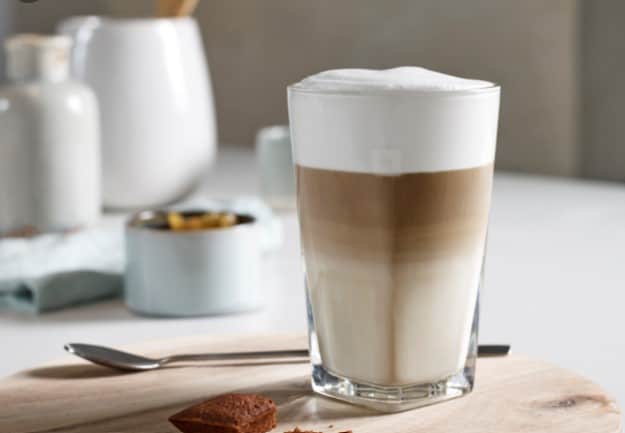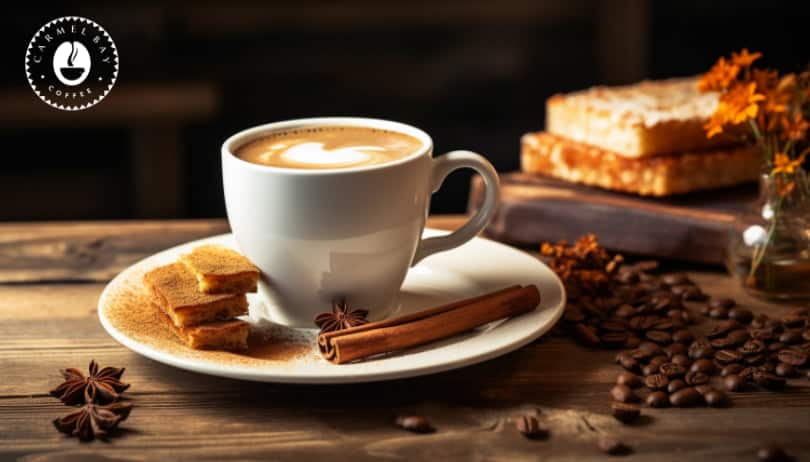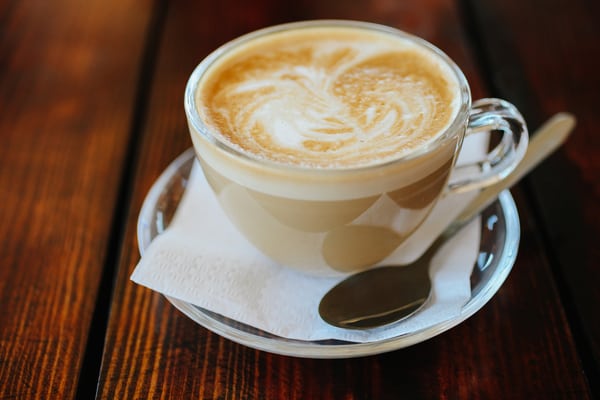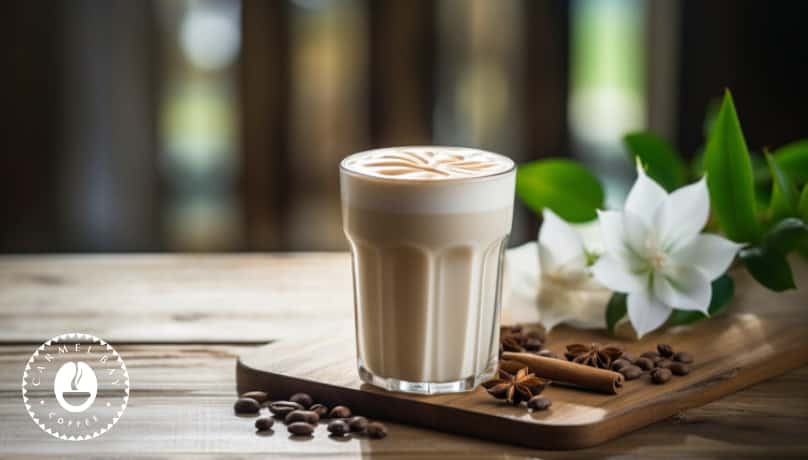Have you ever found yourself in a coffee shop, staring at the menu of various espresso-based drinks and wondering, “What on earth is a Macchiato?” For many coffee lovers, the Macchiato is a delightful mystery. Let’s dive into the world of this intriguing type of coffee and answer what is a Macchiato Coffee.
Origin of Macchiato

The rich tapestry of coffee culture is woven with tales from various corners of the world, and the story of the espresso macchiato is no exception. The term ‘Macchiato’ is a beautiful representation of Italian coffee artistry and an Italian word at its core.
The word ‘Macchiato’ is derived from the Italian verb ‘macchiare,’ which means “to stain” or “to spot.” This terminology paints a vivid picture of the drink’s preparation and presentation. Imagine a canvas of milk, and then picture a bold stroke of espresso painting its mark. That’s the essence of a Macchiato.
Historically, Italian coffee aficionados would often request their espresso with a ‘stain’ or ‘spot’ of milk. This was not just for the mild creaminess it added but also to slightly lower the temperature of the freshly brewed espresso, making it just right for immediate consumption. The milk’s touch was not meant to dilute the coffee’s strength but to enhance its texture and drinkability.
The tradition of ordering a “stained” coffee became so popular in Italy that it soon earned its own name, and thus, the Macchiato was born. Over time, as coffee culture spread and evolved, the Macchiato has seen various interpretations. However, its essence remains the same: a bold espresso marked with a touch of milk.
In today’s global coffee scene, the Macchiato stands as a testament to the balance of strength and subtlety, a harmonious blend of robust coffee flavor with the gentle caress of milk. It’s a drink that tells a story, a tale of Italian heritage, and the timeless love for a well-crafted cup of coffee.
Basic Ingredients for a Macchiato
At its core, a Macchiato is a shot of espresso “stained” with a small dollop of foam. This creates a layered drink where the milk foam sits at the top of the espresso, distinguishing it from other coffee beverages. Think of it as a middle ground between a robust espresso and a creamy latte, or even a latte macchiato with less milk.
The Art of Making a Macchiato

Crafting a Macchiato is not just about mixing coffee and milk; it’s an intricate dance of precision, timing, and passion. Like an artist who carefully chooses colors and brush strokes, a barista meticulously selects the beans, grind size, and brewing time to create the perfect Macchiato. And if you’ve ever seen latte art, you’ll know the precision that goes into these drinks.
Traditional Macchiato Method
In the heart of Italy, where the Macchiato originated, the traditional method of making this drink remains a cherished ritual. Once the espresso is ready, it’s time for the “stain” or “mark.” A small amount of steamed milk, frothy and velvety, is delicately spooned onto the top of the espresso.
This dollop of foam serves a dual purpose: it slightly cools the espresso for immediate sipping and adds a creamy texture that contrasts beautifully with the strong coffee base.
A double shot of espresso is then brewed, typically lasting between 25 to 30 seconds, resulting in a rich and robust coffee base, often served in a classic espresso cup. This espresso shot is the heart of the Macchiato.
Once the espresso is ready, it’s time for the “stain” or “mark.” Using a steam wand, a small amount of steamed milk, frothy and velvety, is delicately spooned onto the espresso. This dollop of milk serves a dual purpose: it slightly cools the espresso for immediate sipping and adds a creamy texture that contrasts beautifully with the strong coffee base. The result? A harmonious blend of strength and subtlety that tantalizes the taste buds.
Modern Variations
As coffee culture spread across continents, the Macchiato began to wear different hats, adapting to local tastes and preferences.
- Flavored Macchiatos: One of the most popular modern twists is the addition of flavored syrups. Caramel Macchiato, for instance, combines the traditional drink with vanilla syrup and a drizzle of caramel, offering a sweet counterpoint to the coffee’s bitterness.
- Layered Macchiatos: Some baristas have turned the Macchiato into a visual treat by layering milk and espresso instead of merely staining the coffee. This method creates a gradient effect, with the dark espresso transitioning to the lighter milk, making it as much a feast for the eyes as for the palate.
- Milk Variations: With the rise of dietary preferences and allergies, many cafes now offer Macchiatos with almond, soy, oat, or coconut milk. Each milk alternative lends a unique flavor profile, adding a new dimension to the classic drink.
- Double or Triple Macchiatos: For those who crave a stronger coffee punch, some cafes offer Macchiatos with two or even three espresso shots, ensuring a caffeine kick that’s sure to awaken the senses.
For a huge list of coffee drinks with the recipes included, please check out our article, Exploring the World of Coffee Drinks: Illustrated Guide.
Differences Between Macchiato and Other Coffees
The world of coffee is vast and varied, with each drink offering a unique taste experience. Among these, the Macchiato holds a special place, but how does it differ from its coffee counterparts?
Macchiato vs. Latte
At first glance, a Macchiato and a Latte might seem similar, given their shared ingredients of espresso and milk. However, the devil is in the details:
- Volume & Texture: A Latte typically consists of a larger volume, often served in bigger cups. It’s characterized by its creamy texture, achieved by adding a generous amount of steamed milk to a shot of espresso. The foam on top is minimal, just a thin layer.
- Flavor Profile: In contrast, a Macchiato is a bolder drink. The espresso dominates the flavor, with just a small amount of milk added, often in the form of a frothy dollop. This results in a stronger coffee taste, with the milk serving more as a textural element than a flavor enhancer.
Macchiato vs. Cappuccino

Another classic comparison in the coffee world is between the Macchiato and the Cappuccino. This might be the most common question when someone asks what a Machhiato is:
- Composition: A Cappuccino is a balanced trio of espresso, steamed milk, and frothy milk, often in equal parts. This creates a layered effect, with the dense espresso at the bottom, the creamy steamed milk in the middle, and the thick frothy milk on top.
- Taste & Texture: While a Macchiato is predominantly about the espresso’s robustness with a hint of milk, a Cappuccino offers a more harmonized blend of strong coffee and creamy milkiness. The thick foam on top of a Cappuccino also adds a velvety mouthfeel, making each sip a luxurious experience.
Popular Macchiato Variations
As with any beloved beverage, the Macchiato has seen numerous adaptations over the years:
- Caramel Macchiato: This sweet twist on the classic Macchiato has become a global favorite. The addition of vanilla syrup provides a sweet base, while the caramel drizzle on top adds a rich, buttery finish. The result is a drink that’s both indulgent and invigorating.
- Iced Macchiato: Ideal for those sweltering days when you crave the kick of coffee but want something cool and refreshing. An Iced Macchiato takes the essence of the traditional drink and serves it over ice, making it a perfect summer companion.
The Perfect Occasion for a Macchiato
The beauty of a Macchiato lies in its versatility. Its strong espresso base, complemented by the soft touch of milk, makes it suitable for various moments:
- Morning Energizer: Start your day with a Macchiato to awaken your senses and get that caffeine boost.
- Afternoon Delight: Feeling that midday slump? A Macchiato can be the perfect pick-me-up, offering both flavor and energy.
- Evening Wind-down: Paired with a good book or a relaxing playlist, a Macchiato can be the ideal companion to wind down after a long day.
FAQs – Is Macchiato Coffee?
What Does ‘Macchiato’ Mean?
The term ‘Macchiato’ is a beautiful testament to the Italian language’s ability to capture the essence of things in a single word. Originating from the Italian verb ‘macchiare,’ it translates to “stained” or “spotted.” This name is a direct reflection of the drink’s preparation.
When you think of a Macchiato, imagine a canvas of pure, unadulterated espresso, upon which a “stain” or “spot” of milk is added. This delicate touch of milk doesn’t overpower the espresso but rather complements it, creating a harmonious blend of strength and subtlety.
Is Macchiato Stronger Than Espresso?
When you sip on a Macchiato, you’re essentially tasting the robust flavor of espresso, with just a hint of milk to enhance its texture. But how much caffeine does it have compared to a double espresso?
While an espresso shot is pure coffee, a Macchiato takes that intensity and adds a touch of creaminess. So, is it stronger than espresso? Not in terms of coffee concentration.
However, the presence of milk in a Macchiato might make it seem a tad milder, but it still retains the strong, aromatic essence of the espresso.
How Is a Caramel Macchiato Different From a Regular Macchiato?
While a traditional Macchiato is a straightforward blend of espresso and a dollop of milk, the Caramel Macchiato is a more indulgent affair. This modern variation starts with a base of vanilla syrup, which adds a sweet undertone to the drink. Then, instead of just a touch of milk, more steamed milk is added, making it creamier.
The pièce de résistance is the caramel drizzle on top, which not only adds a rich, buttery sweetness but also makes it visually enticing. It’s a delightful fusion of flavors that offers a sweeter and creamier alternative to the classic Macchiato.
Can I Have a Macchiato Iced?
Absolutely! An Iced Macchiato is a refreshing twist on the traditional hot version. It’s perfect for those warm days when you crave the rich taste of coffee but desire a cooler, more invigorating drink.
To make an Iced Macchiato, a shot of espresso is poured over ice, followed by a splash of cold milk. The result? A chilled, revitalizing beverage that retains the essence of a Macchiato while offering a cool respite.
Is Macchiato Suitable for Those Who Don’t Like Strong Coffee?
The Macchiato occupies a unique space in the coffee spectrum. For those who find pure espresso too intense but feel lattes are too milky, the Macchiato offers a middle ground. It provides the robustness of espresso but tempers it with a touch of milk.
So, if you’re someone who’s looking for a balanced coffee experience – not too strong, not too mild – the Macchiato is your perfect match.
Do I Need an Espresso Machine?
While the traditional method of making a Macchiato requires an espresso machine to achieve that rich, concentrated coffee shot, it’s not the only way. If you don’t have an espresso machine at home, you can use a Moka pot, AeroPress, or even a strong French press brew as an alternative.
These methods won’t replicate the exact intensity of an espresso shot, but they can produce a strong coffee base suitable for a Macchiato. However, an espresso machine is recommended for the authentic experience, especially if you’re aiming for the perfect balance of flavors and textures.
It ensures the right pressure and temperature to extract the deep flavors and aromas from the coffee beans, making your Macchiato truly stand out.
Wrapping Up – What Is Macchiato Coffee?
So, is Macchiato coffee? Absolutely! It’s a delightful blend of strong espresso and a hint of milk, making it a perfect choice for those who want the best of both worlds. Next time you’re at a coffee shop, why not give it a try?



